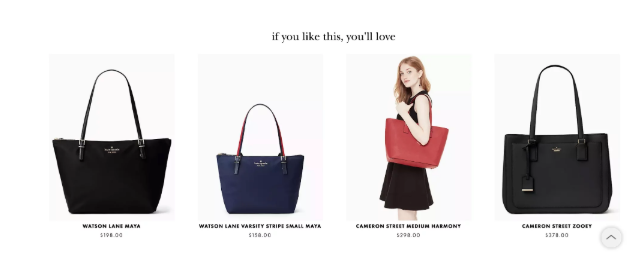# -*- coding: utf-8 -*-
"""
Created on Wed Nov 18 16:30:52 2020
@author: Administrator
"""
import tensorflow as tf
print('#本指南将训练一个神经网络模型,对运动鞋和衬衫等服装图像进行分类!')
# 使用了 tf.keras,它是 TensorFlow 中用来构建和训练模型的高级 API
import tensorflow as tf
from tensorflow import keras
# Helper libraries
import numpy as np
import matplotlib.pyplot as plt
print("#tensorflow version:", tf.__version__) # 2.3.1
# 数据集
print("#Fashion MNIST 数据集,该数据集包含 10 个类别的 70,000 个灰度图像。这些图像以低分辨率(28x28 像素)展示了单件衣物")
print("#Fashion MNIST 旨在临时替代经典 MNIST 数据集,常被用作计算机视觉机器学习程序的“Hello, World”")
print("#MNIST 数据集包含手写数字(0、1、2 等)的图像,其格式与您将使用的衣物图像的格式相同")
print("#这两个数据集都相对较小,都用于验证某个算法是否按预期工作。对于代码的测试和调试,它们都是很好的起点")
fashion_mnist = keras.datasets.fashion_mnist
(train_images, train_labels), (test_images, test_labels) = fashion_mnist.load_data()
# train_images 和 train_labels 数组是训练集,即模型用于学习的数据
# 测试集、test_images 和 test_labels 数组会被用来对模型进行测试
#
class_names = ['T-shirt/top', 'Trouser', 'Pullover', 'Dress', 'Coat',
'Sandal', 'Shirt', 'Sneaker', 'Bag', 'Ankle boot']
print('#训练集:', train_images.shape)
print("#标签长度:", len(train_labels))
print("#标签:", train_labels)
print("#测试集:", test_images.shape)
print("#测试集标签长度:", len(test_labels))
print("#1.预处理数据...")
plt.figure()
plt.imshow(train_images[201])
plt.colorbar()
plt.grid(False)
plt.show() # 可以在 Plots 面板中看到图像
# 将这些值缩小至 0 到 1 之间,然后将其馈送到神经网络模型。为此,请将这些值除以 255。请务必以相同的方式对训练集和测试集进行预处理:
train_images = train_images / 255.0
test_images = test_images / 255.0
# 为了验证数据的格式是否正确,以及您是否已准备好构建和训练网络,
# 让我们显示训练集中的前 25 个图像,并在每个图像下方显示类名称。
plt.figure(figsize=(10, 10))
for i in range(25):
plt.subplot(5, 5, i + 1)
plt.xticks([])
plt.yticks([])
plt.grid(False)
plt.imshow(train_images[i], cmap=plt.cm.binary)
plt.xlabel(class_names[train_labels[i]])
plt.show()
print("#2.构建模型")
print("# 2.1 设置层")
model = keras.Sequential([
keras.layers.Flatten(input_shape=(28, 28)), ## 将图像格式从二维数组(28 x 28 像素)转换成一维数组(28 x 28 = 784 像素)
keras.layers.Dense(128, activation='relu'), ## 密集连接或全连接神经层 128 个节点(或神经元)
keras.layers.Dense(10) ## 长度为 10 的 logits 数组。每个节点都包含一个得分,用来表示当前图像属于 10 个类中的哪一类
])
print("#3.编译模型")
model.compile(optimizer='adam',
loss=tf.keras.losses.SparseCategoricalCrossentropy(from_logits=True),
metrics=['accuracy'])
print('#4.向模型馈送数据 ')
model.fit(train_images, train_labels, epochs=10)
print("#5.评估准确率")
test_loss, test_acc = model.evaluate(test_images, test_labels, verbose=2)
print('\nTest accuracy:', test_acc)
print('#6 进行预测')
probability_model = tf.keras.Sequential([model, tf.keras.layers.Softmax()])
predictions = probability_model.predict(test_images)
print("预测第一个结果:", predictions[0])
print("可信度最大值:", np.argmax(predictions[0]))
def plot_image(i, predictions_array, true_label, img):
predictions_array, true_label, img = predictions_array, true_label[i], img[i]
plt.grid(False)
plt.xticks([])
plt.yticks([])
plt.imshow(img, cmap=plt.cm.binary)
predicted_label = np.argmax(predictions_array)
if predicted_label == true_label:
color = 'blue'
else:
color = 'red'
plt.xlabel("{} {:2.0f}% ({})".format(class_names[predicted_label],
100 * np.max(predictions_array),
class_names[true_label]),
color=color)
def plot_value_array(i, predictions_array, true_label):
predictions_array, true_label = predictions_array, true_label[i]
plt.grid(False)
plt.xticks(range(10))
plt.yticks([])
thisplot = plt.bar(range(10), predictions_array, color="#777777")
plt.ylim([0, 1])
predicted_label = np.argmax(predictions_array)
thisplot[predicted_label].set_color('red')
thisplot[true_label].set_color('blue')
print("验证预测结果:")
i = 12
plt.figure(figsize=(6, 3))
plt.subplot(1, 2, 1)
plot_image(i, predictions[i], test_labels, test_images)
plt.subplot(1, 2, 2)
plot_value_array(i, predictions[i], test_labels)
plt.show()
num_rows = 5
num_cols = 3
num_images = num_rows * num_cols
plt.figure(figsize=(2 * 2 * num_cols, 2 * num_rows))
for i in range(num_images):
plt.subplot(num_rows, 2 * num_cols, 2 * i + 1)
plot_image(i, predictions[i], test_labels, test_images)
plt.subplot(num_rows, 2 * num_cols, 2 * i + 2)
plot_value_array(i, predictions[i], test_labels)
plt.tight_layout()
plt.show()
# 使用训练好的模型对单个图像进行预测
img = test_images[1]
print(img.shape)
# tf.keras 模型经过了优化,可同时对一个批或一组样本进行预测
img = (np.expand_dims(img, 0))
print(img.shape)
# 增加相应标签
predictions_single = probability_model.predict(img)
print(predictions_single)
plot_value_array(1, predictions_single[0], test_labels)
_ = plt.xticks(range(10), class_names, rotation=45)
个人微信:ssevening

